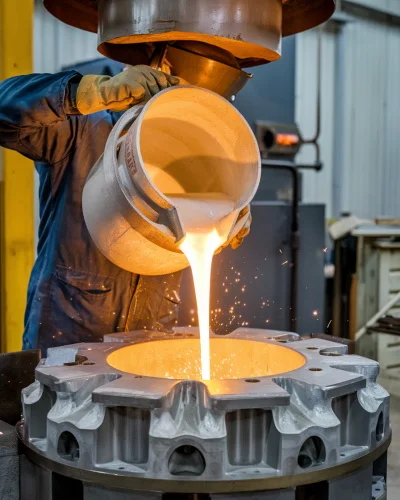Zinc Die Casting vs. Other Methods in Manufacturing and Production of Medical Devices
Zinc Die Casting vs. Other Methods in Manufacturing and Production of Medical Devices
Blog Article
In the medical device industry, the selection of a manufacturing process is often the decisive factor in determining the success of a product. This is because the reliability, accuracy, and cost efficiency of a medical device depends on how its parts are manufactured. Each available technique has its advantages and disadvantages and their selection affects the safety of the patient and success of the product.
Zinc die casting is one of the options, and it seems to be gaining more prominence. Nevertheless, it competes with well-established techniques such as machining, injection molding, and 3D printing. The purpose of this article is to analyze zinc die casting in comparison to the other methods in relation to the production of medical devices.
Evaluating each industrial operation on their effectiveness in creating intricate geometries, achieving requisite mechanical characteristics, maintaining cost effectiveness, and addressing specialized considerations of the surgical sector provides tailored insight into each method's unique advantages. From components' structural resilience and precision tolerances to cumbersomely accelerated prototyping demand, every nuance matters in surgical instrument fabrication. Thus, it is time to evaluate the optimal process for distinct medical device engineering demands.

Machining
Zinc Die Casting Advantages
Complex shapes: Zinc die casting simplifies fast production of parts with complex geometries such as internal cavities, undercuts, and thin walls. This improves efficiency by reducing the number of parts that need to be assembled. Cost effective for high volumes: Zinc die casting is more cost effective than machining in mass production owing to expensive tooling costs for die casting. These costs, once incurred, are amortized over a large number of parts, reducing the per-unit cost significantly.
Disadvantages of Zinc Die Casting:
Compared with other machining processes, the range of available materials is limited. Zinc die casting materials are confined to zinc alloys due to their unique combination of properties. However, these alloys are suitable for a wide range of medical applications. Surface finish: zFinish quality especially in termsof roughness from machining is often sharper than die cast surfaces and smoothing for medical precision applications is usually performed on casted parts.
Injection Molding (for Plastics)
Advantages of Zinc Die Casting:
Stronger and more durable: Compared to injection molded plastic components, parts that are die casted from zinc alloys have higher extraction, higher stiffness, improved heat resistance and are much more durable when exposed to mechanical strain, high temperatures, and harsh environmental conditions. This make such components ideal for use in devices subjected to such harsh conditions.
Improved parts are further enhanced: Medicl device precision and blanace re so critical that parts must be checkedfor accuracy and fit before being installed in the assempbled device. Also, shrinkage often occurs and results in poor quality finishes.
Disadvantages of Zinc Die Casting:
Weight: Die cast components are heavier because zinc is denser compared to most plastics. In some portable medical devices where weight is a critical factor, injection molded plastics may be preferred. Design flexibility: Greater inclusivity in color selection, transparency as well as soft-touch feature integration or elastomeric functionalities makes injection molding more flexible than zinc die casting. These aspects can be important for the user-friendly and aesthetic appeal of certain medical devices.
3D Printing
Advantages of Zinc Die Casting:
Production speed and volume: Compared to 3D printing, zinc die casting is far faster in large-scale production. It is especially advantageous in the mass manufacture of medical devices because die casting is capable of producing parts at a vastly greater volume. Mechanical properties: Compared to many 3D printed materials, die cast zinc parts tend to exhibit superior mechanical properties such as strength and fatigue resistance. This is critical, especially for load bearing components in medical devices.
Drawbacks of Zinc Die Casting:
Freedom of Design: There is far greater freedom of design, as highly complex geometries and customizations are easy with 3D printing. Unlike die casting, 3D printing can fabricate intricate lattices, internal channels, and various other shapes that are difficult or impossible to achieve with traditional methods. Prototyping: For rapid prototyping, 3D printers are usually preferred due to their speed in creating single-piece or small batch prototypes with very little time and effort needed for tooling. In the case of zinc die casting, there is a large amount of tooling overhead and lead time needed for producing the actual tools.
Why Choose Junyin for Your Die Casting Projects?
When sourcing precision components, partnering with the right die casting supplier is critical. Junyin stands out by offering ISO-certified production, advanced CNC machining capabilities, and over 15 years of industry experience. Whether you're designing automotive housings or consumer electronics shells, Junyin combines cost-efficiency with strict quality control to deliver exceptional parts—on time and at scale.
Report this page